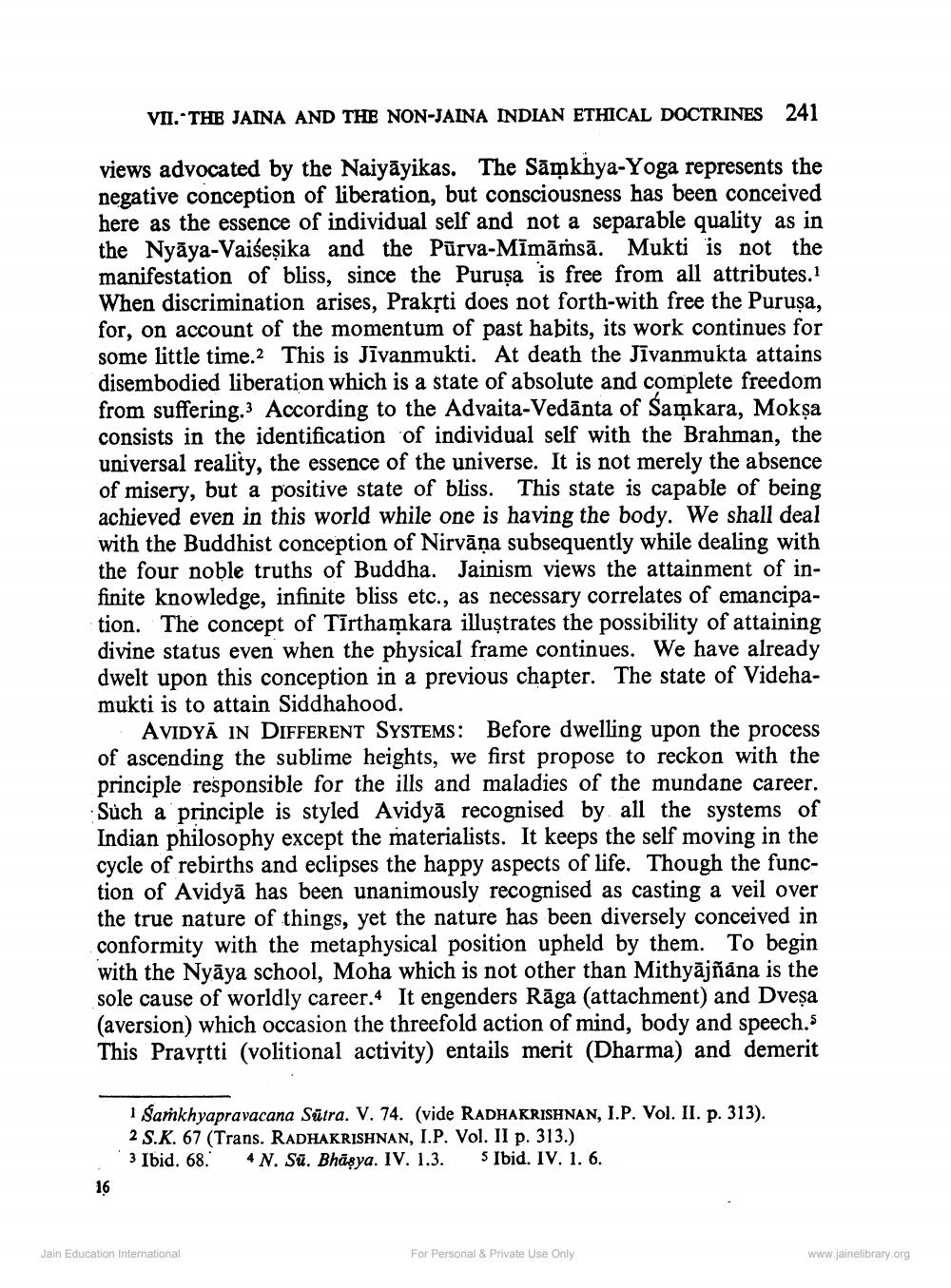________________
VII.-THE JAINA AND THE NON-JAINA INDIAN ETHICAL DOCTRINES 241
views advocated by the Naiyāyikas. The Sāņkhya-Yoga represents the negative conception of liberation, but consciousness has been conceived
re as the essence of individual self and not a separable quality as in the Nyāya-Vaiseșika and the Pūrva-Mīmāṁsā. Mukti is not the manifestation of bliss, since the Puruşa is free from all attributes.? When discrimination arises, Praksti does not forth-with free the Puruşa, for, on account of the momentum of past habits, its work continues for some little time. This is jīvanmukti. At death the Jīvanmukta attains disembodied liberation which is a state of absolute and complete freedom from suffering.3 According to the Advaita-Vedānta of Samkara, Mokşa consists in the identification of individual self with the Brahman, the universal reality, the essence of the universe. It is not merely the absence of misery, but a positive state of bliss. This state is capable of being achieved even in this world while one is having the body. We shall deal with the Buddhist conception of Nirvāṇa subsequently while dealing with the four noble truths of Buddha. Jainism views the attainment of infinite knowledge, infinite bliss etc., as necessary correlates of emancipation. The concept of Tirthamkara illustrates the possibility of attaining divine status even when the physical frame continues. We have already dwelt upon this conception in a previous chapter. The state of Videhamukti is to attain Siddhahood.
AVIDYĀ IN DIFFERENT SYSTEMS: Before dwelling upon the process of ascending the sublime heights, we first propose to reckon with the principle responsible for the ills and maladies of the mundane career. Such a principle is styled Avidyā recognised by all the systems of Indian philosophy except the materialists. It keeps the self moving in the cycle of rebirths and eclipses the happy aspects of life. Though the function of Avidyā has been unanimously recognised as casting a veil over the true nature of things, yet the nature has been diversely conceived in conformity with the metaphysical position upheld by them. To begin with the Nyāya school, Moha which is not other than Mithyājñāna is the sole cause of worldly career. It engenders Rāga (attachment) and Dveșa (aversion) which occasion the threefold action of mind, body and speech.s This Pravștti (volitional activity) entails merit (Dharma) and demerit
1 Samkhyapravacana Sūtra. V. 74. (vide RADHAKRISHNAN, I.P. Vol. II. p. 313). 2 S.K. 67 (Trans. RADHAKRISHNAN, I.P. Vol. II p. 313.) 3 Ibid. 68. 4N. Sü. Bhâsya. IV. 1.3. 5 Ibid. IV. 1. 6.
Jain Education International
For Personal & Private Use Only
www.jainelibrary.org




